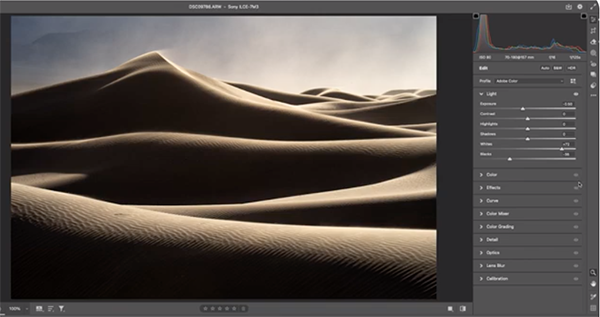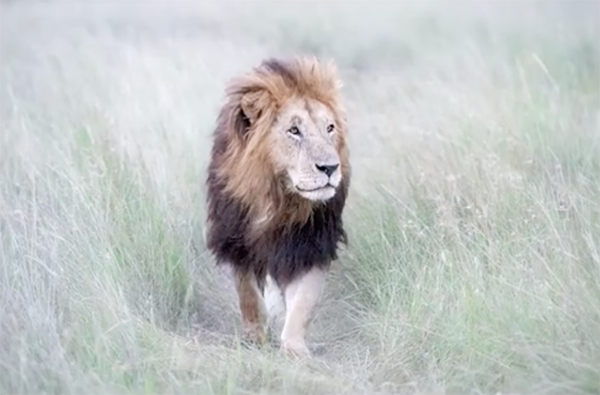Cruise Review: Springtime in the Fjords with Ambassador Cruise Line on board Ambience
Early April might not initially seem like a prime time to visit Scandinavia, yet the season-opening Springtime Norwegian Fjordland cruise proved that this part of the world shines brightly at this time of year.
They’re still skiing half an hour’s drive from Eidfjord, yet we enjoyed a riverside ramble and even sat on a lakeside beach.
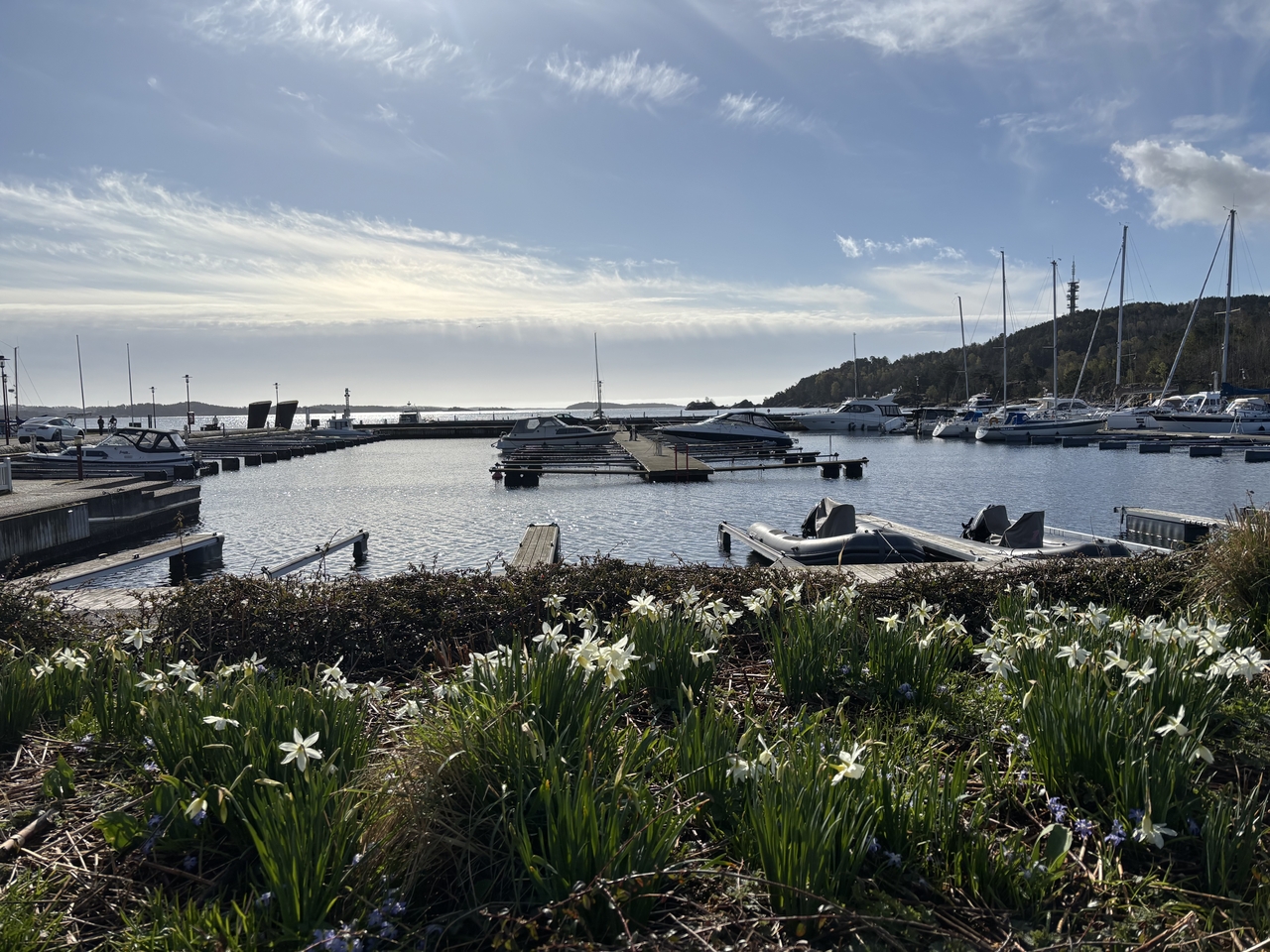
The daffodils shine brightly in Kristiansand
The cruise
This is an 11-night voyage, starting at London Cruise Terminal’s historic 1930s port building at Tilbury on the Thames. The cruise was unusual in that, as well as visiting the fjords, it also slipped around the south of Norway, taking in the pretty resort of Kristiansand and the capital city, Oslo.
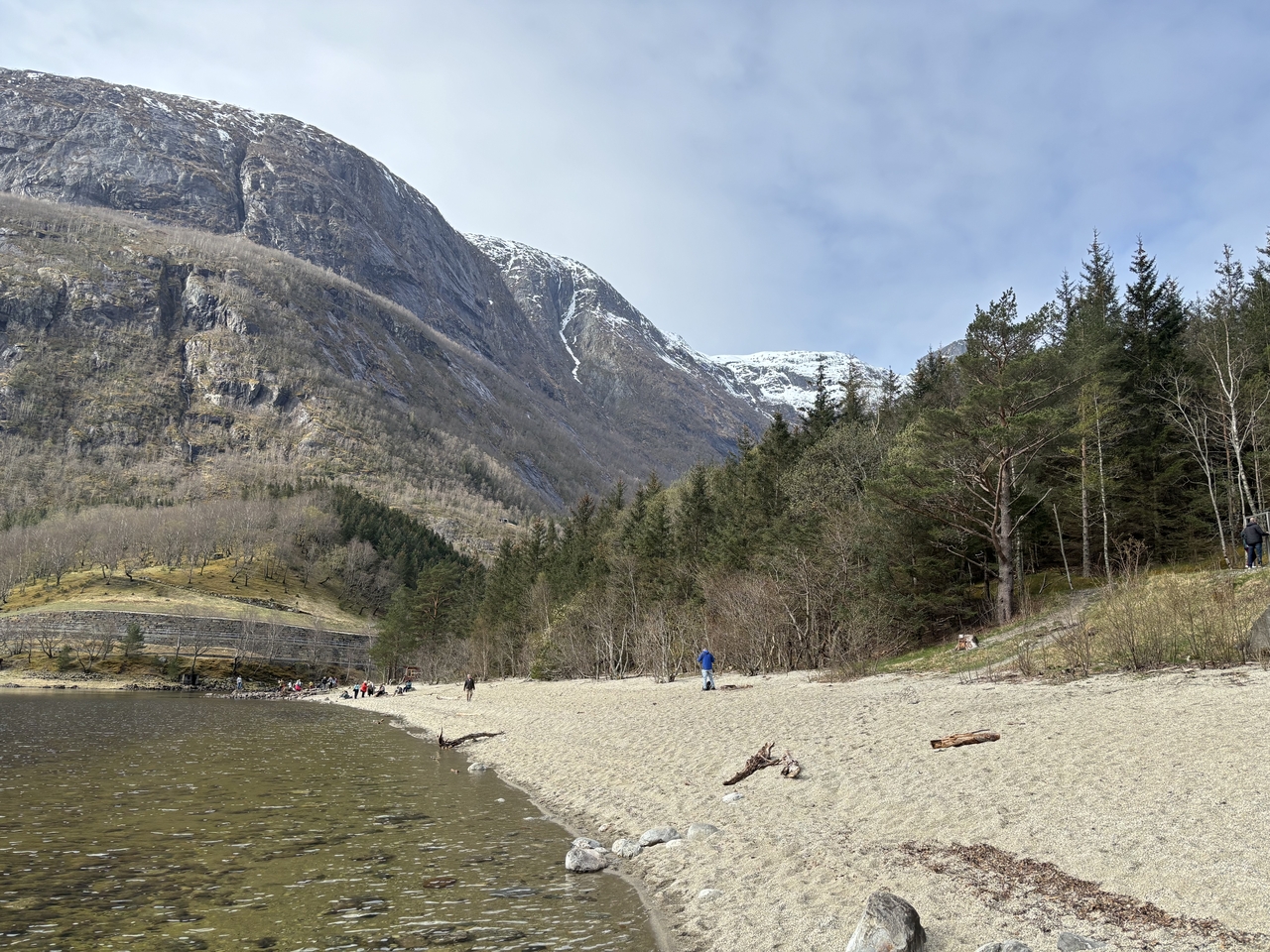
The places
We started with a serene spring sail down the Thames – passing Southend pier – then settled down to a soothing day at sea as we headed north to…

Fisher folk gaze at Ambience in Haugersund
Haugesund
A coastal town on Karmsund Sound which has a fjord-like feel, with views across to the large island of Karmøy. Just across a canal-like channel is the working port isle of Risøy. We dock there, next to seemingly a giant, yellow oil rig but actually DolWin5 which, when completed, will be towed to the North Sea off Germany as one of the world’s most powerful wind farm energy converter stations. Our excursion honours those other conquerors of the seas, the Vikings. A coach to Karmøy, across the elegantly leaping arched steel Karmsund bridge, to the hillside waterfront village of Avaldsnes, known as Norway’s oldest capital as King Harald Fairhair, who unified the nation, had his court here in the 9th century. The remains sit next to regal 13th-century St Olav’s Church. A few steps away we find more steps, down to Nordvegen History Centre all but subterranean, telling the area’s past through film and boats and other items unearthed during digs. A breezy 10-minute stroll away is a recreation of a Viking farm with a 25m longhouse where an enthusiastic chap in Viking gear gives us a talk.
Back in Haugesund there’s time to wander through town, past the neo-classical 1930s town hall, into neo-gothic early 1901 redbrick Vår Frelsers church with its magnificent interior, not least its ornate wooden ceiling and giant iron chandelier, along the colourful waterfront and across the bridge back to Risøy.
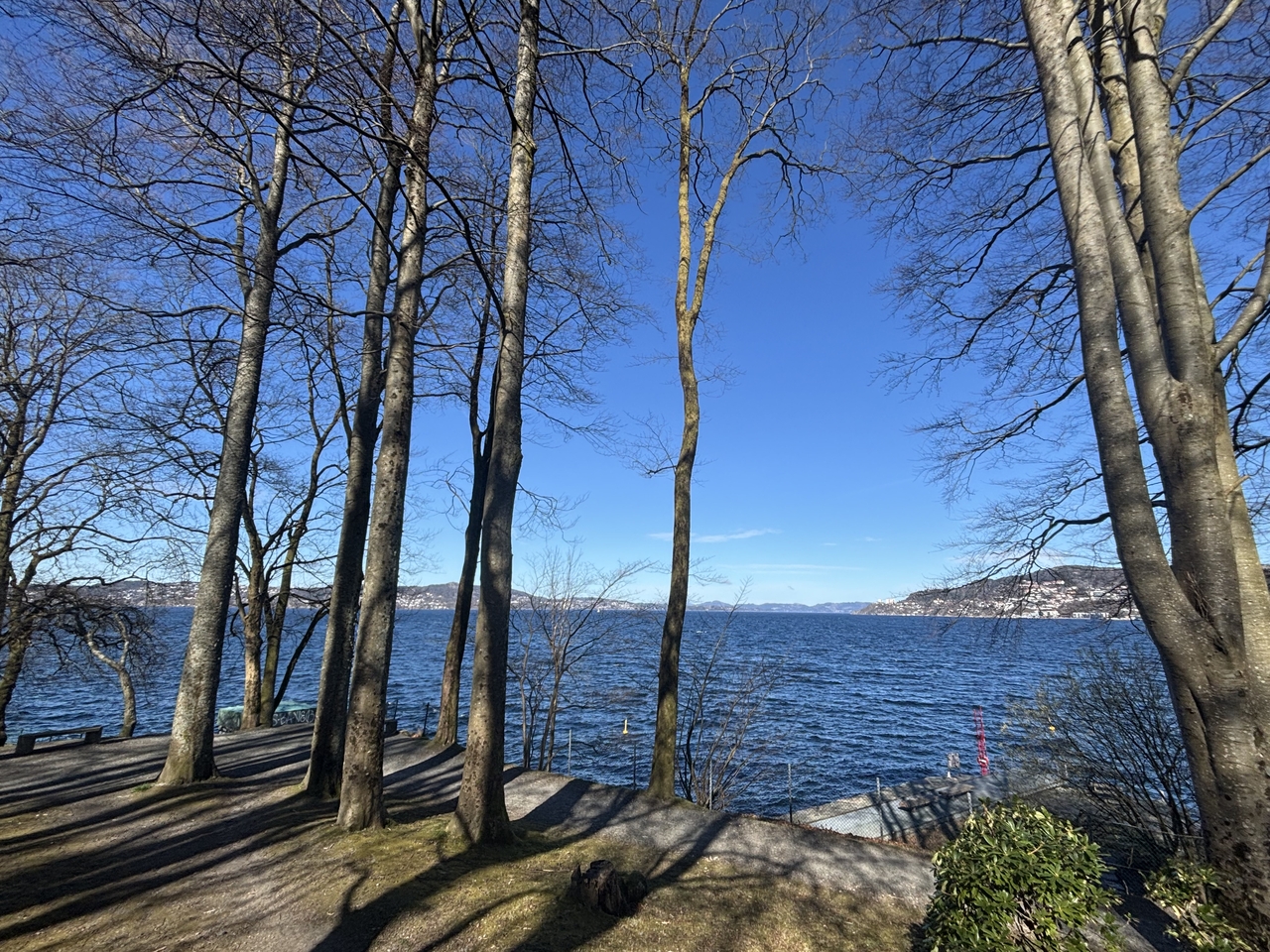
Nordnes Park in Bergen
Bergen
Renowned for being at best cloudy (it’s on record as being Europe’s wettest city with an average of 240 downpour days a year), it surprised us all.
It was sunny and warm, meaning a stupendous – and rare – panorama over city and sea from the top of the funicular, which climbs from the narrow streets at sea level 320m up Mount Fløyen.
We walked along the Bryggen quayside, the historic timbered homes and shops, past the fish market and headed up the Nordnes peninsula across the harbour, narrow streets alive with blossom, before reaching Nordnes Park, a small, rocky, tree-filled spot at the tip with benches for a sit in the sun.
Along the south-facing far side we found Kafe Kippers, a cool café, part of the USF (United Sardine Factory), once the largest cannery in Norway with the 1910 red brick building now a waterfront arts centre. Onward, round city centre Lille Lungegårdsvannet lake, along pretty streets and through the free-to-wander grounds of Bergenhus Fortress and back to Ambience. And with a suntan.
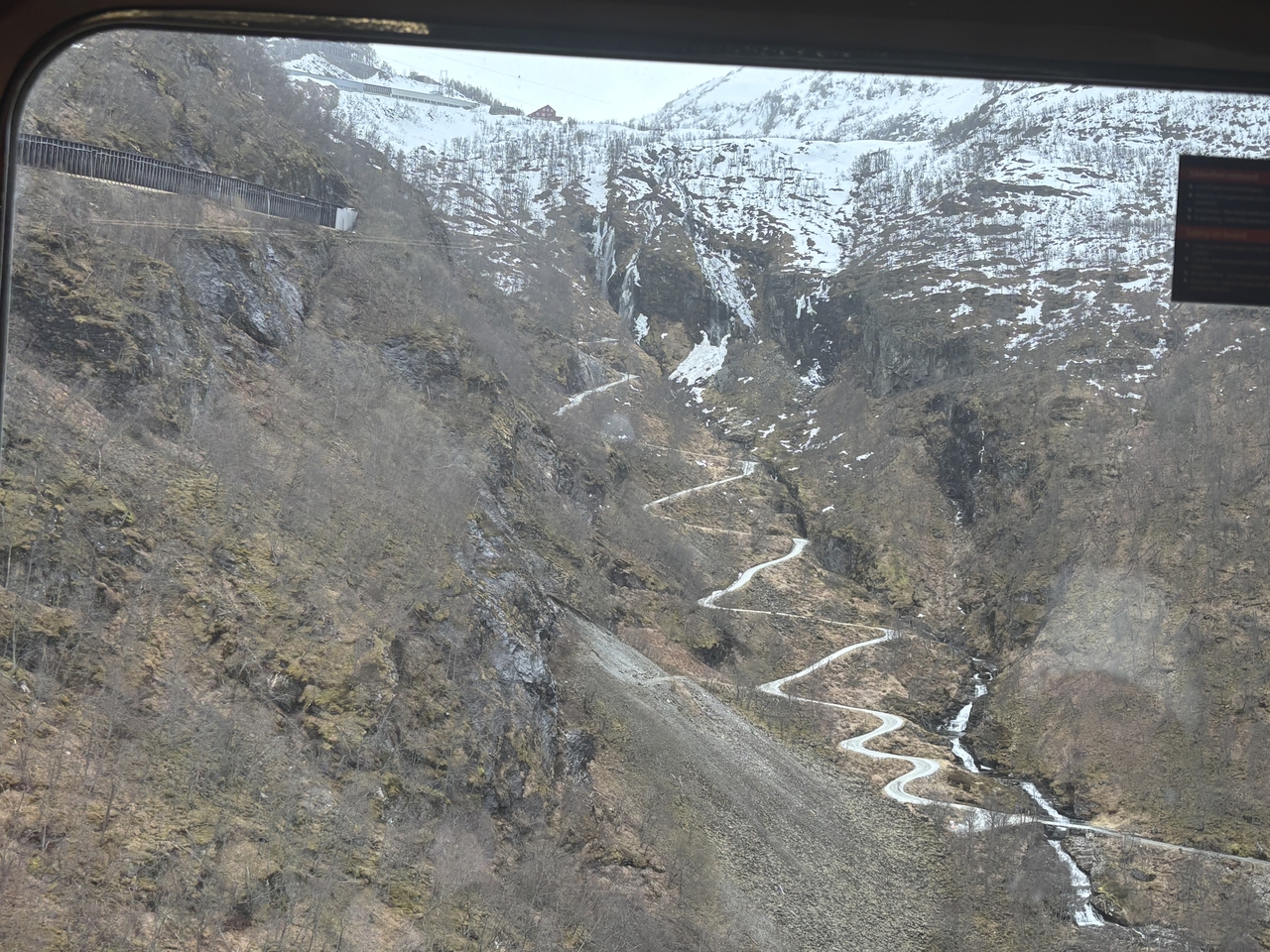
Our hike in Flåm – seen from the train on the way up
Flam
Flam is a tiny place, seemingly mostly selling Nordic jumpers and woolly socks, as far as you can get along Aurlandsfjorden, off Sognefjorden.
But we’re not here to shop, we’re here to ride the Flåm (pronounced Flom) railway, an hour-long electric train journey from the sea to sky, reaching 866m, in 20km. It’s a breathtaking trip, along narrow ledges, past waterfalls, round hairpin bend, through 20 tunnels and criss-crossing the splashing river below three times. Our tour has us getting off at lonely Vatnashalsen, one stop before the Myrdal summit – and walking about 9km down to Blomheller station. It’s an eye-opener, even in sunny spring, first walking a snowy path which gives way to dirt and rock as it zigzags down the historic construction road before becoming a more regular trail. Exhausting and exhilarating.
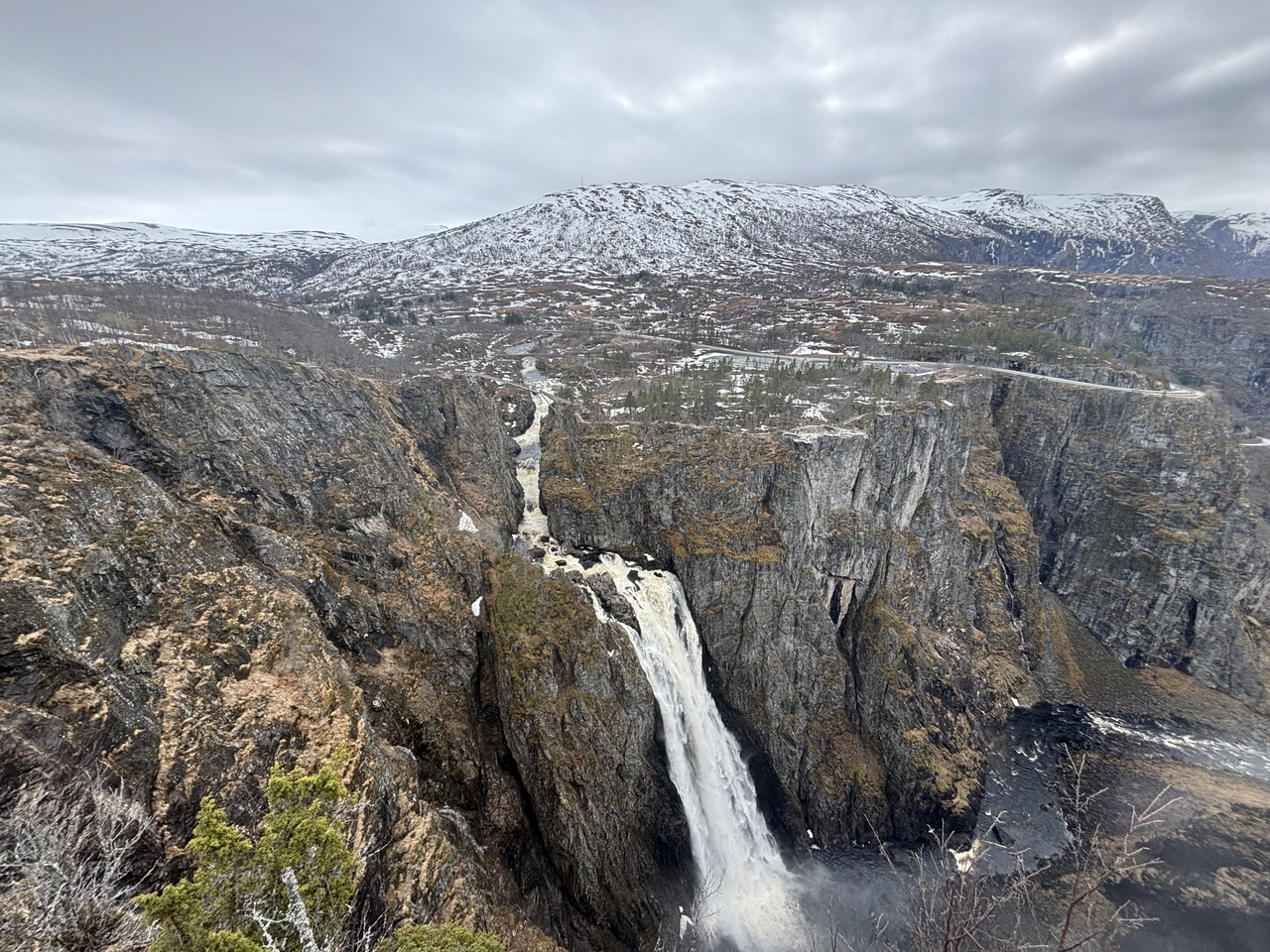
The grandeur of Vøringsfossen
Eidfjord
Eidfjord is a tiny community at the end of the 18km self-named fjord, an offshoot of the long, with spectacular Hardangerfjord mountain peaks, whichever way you look.
We walk from the ship and stroll along River Eio, a rushing, rocky stream that connects the fjord with Eidfjortvatnet, a placid lake. We find a south-facing, sandy beach where we goggle at the scenery. A path takes us up through the pines to Haereid, western Norway’s biggest group of burial mounds, 350 of them dating back to 400AD, against a backdrop of sheer, shiny rock faces and a crashing waterfall. Continuing the loop, we arrive high above the ship and zigzag down.
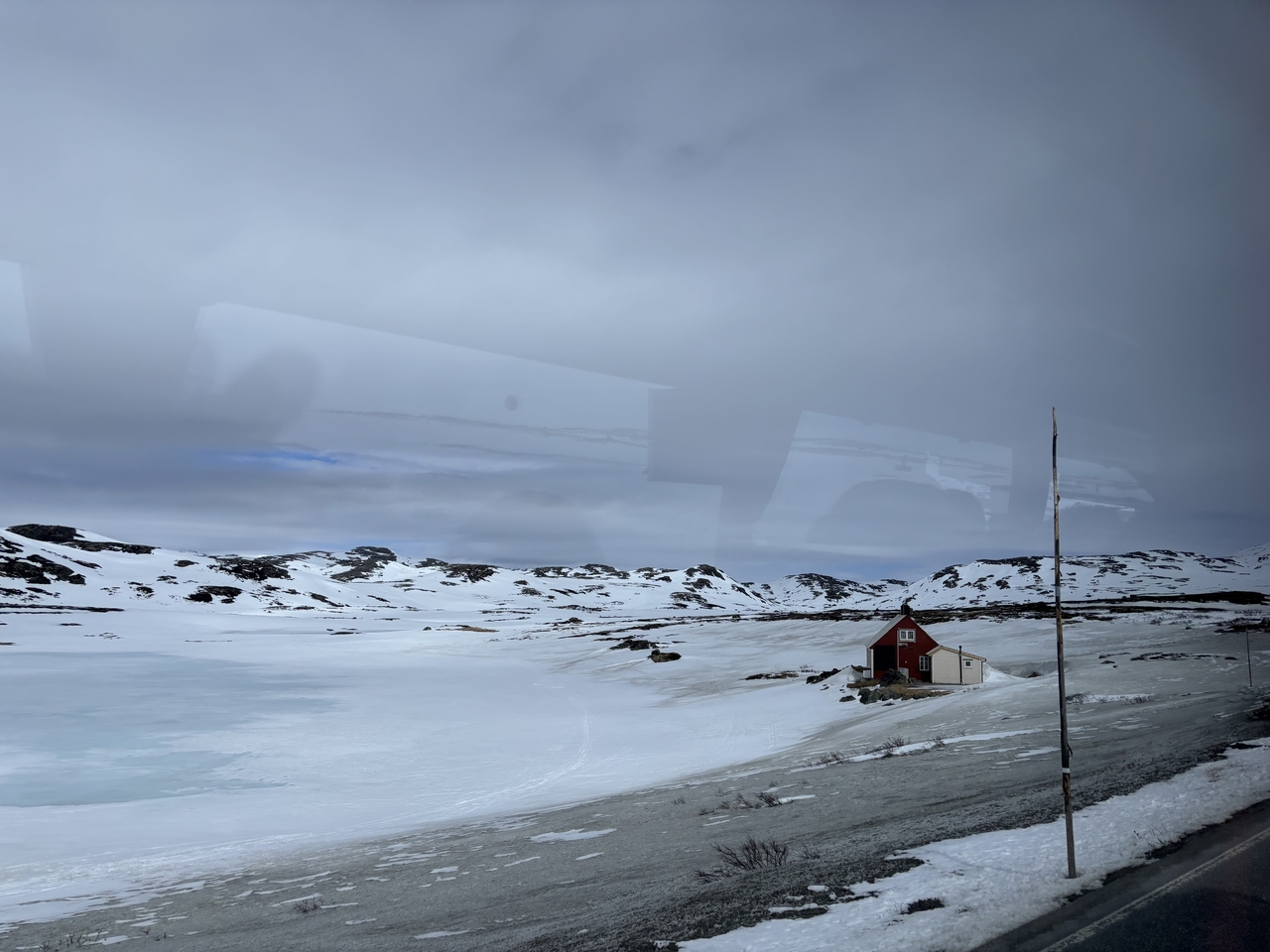
The icy wonder of Hardangervidda
Now it’s time for a coach tour, and we pass the lake, and as the road heads up the steep river valley at one point a tunnel does a 360-degree loop. We find the Hardangervidda mountain plateau, more than 1,100m up, Europe’s largest with a year-round alpine climate – and that means snowy bleakness as far as the eye can see.
We drive and marvel, stopping at a traditional café for coffee as cross-country skiers make tiny dots in the snowy, but sunny, expanse outside. We pass Sysendalen ski area, where skiers are having a great time, before calling at Vøringsfossen, twin waterfalls on either side of a steep gorge.
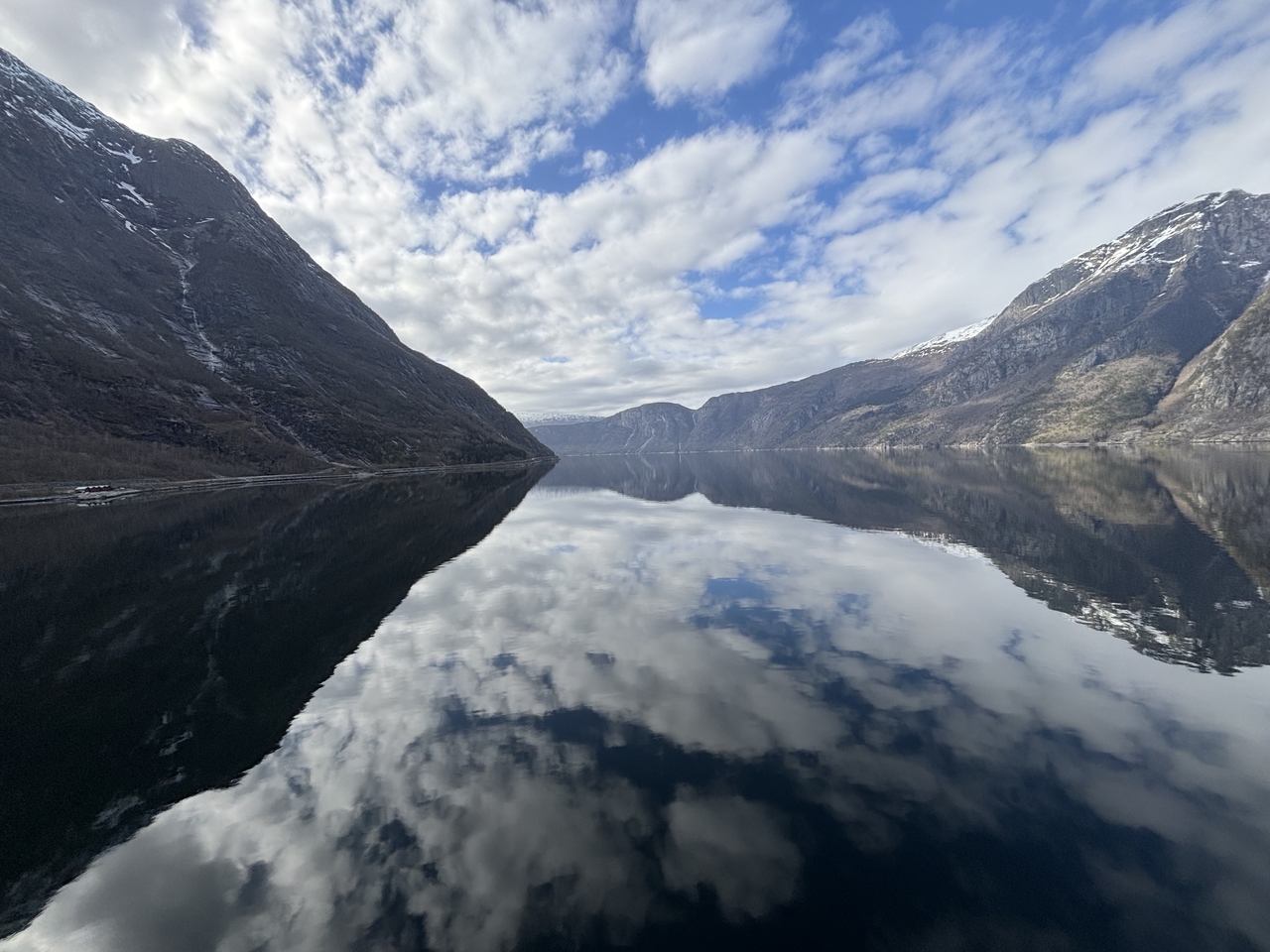
Reflecting on life as we sail away from Eidfjord
Sailing away is an excursion in itself, an hour and more heading along the fjord as the sun drops toward the snowy peaks.
Stavanger
Stavenger is a pretty quayside and narrow streets lined with historic, white-painted houses despite being at the hub of the oil industry. Here we wander lazily and see history from two ears. First is the quayside Norwegian Petroleum Museum, fascinating even if you didn’t think you needed to know all that much about petrol. The discovery of North Sea oil fields in 1969 right up to an involvement in renewable energy, there are models of oil rigs, huge projections, lots of jargon, historic machinery and several rig-like display rooms on legs in the sea. Then a walk through the old heart, by the side of Breiavatnet, a little swan-populated lake in a little park surrounded by pretty buildings, to the Museum of Archaeology. Here, in a stylishly Scandi setting are finds from jewellery to cookware, even a polar bear skeleton, all neatly explained in English.
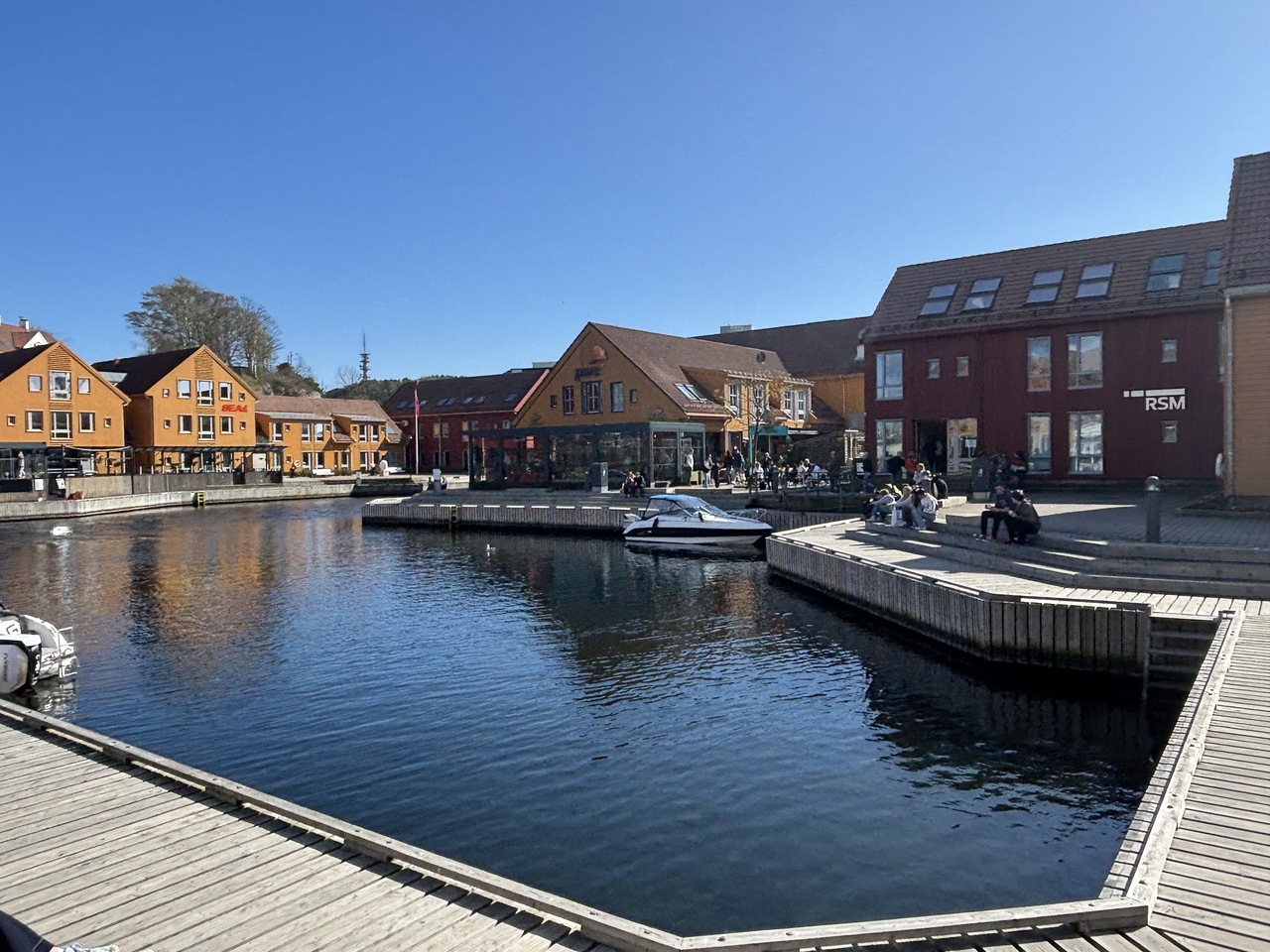
Kristiansand’s pretty port village
Kristiansand
Kristiansand is a relaxed southern seaside resort – there’s little City Beach and we wander across it (where people are swimming) after leaving the ship and strolling through the contemporary portside village of shops and restaurants, across Otterdal Park greensward, past the yacht marina and round to the banks of the River Otra. We cross a little footbridge and continue on the other side, finding our way through to the Natural History Museum where we amuse ourselves in the free Botanic Gardens, clipped hedges, neat beds, daffs and narcissus giving a spot to linger.
Returning, we cross a road bridge, walk up the hill into Baneheia, a vast, hilly, wilderness park with several lakes that ends at the edge of the neat, symmetrical streets of the old town. The day’s grown warmer and warmer and, after passing the imposing, grey neo-gothic cathedral it’s time to sit and gaze over the sea.
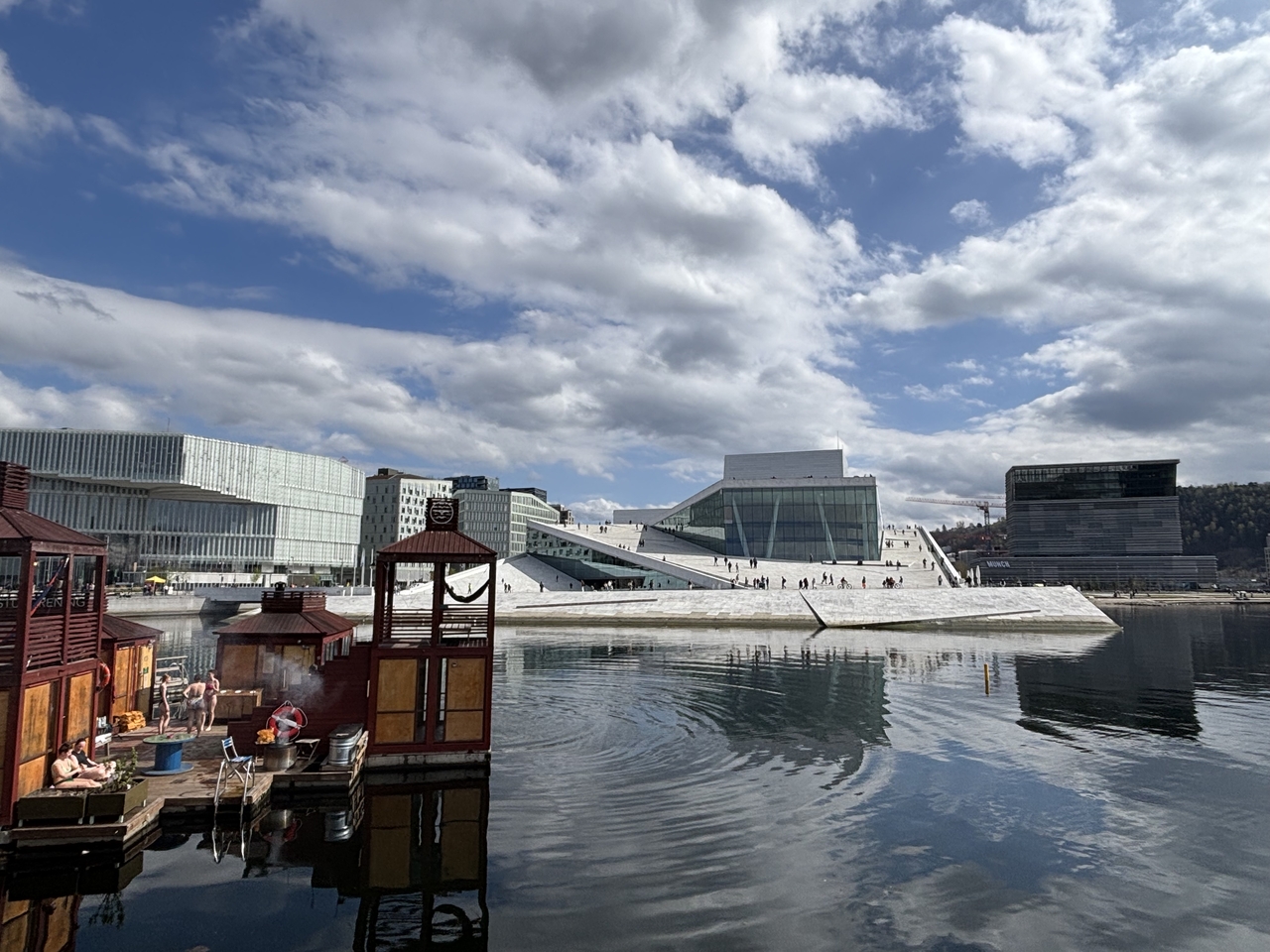
Swimming and singing… a bathing platform and Oslo’s Opera House
Oslo
At Oslo, the capital, we berth opposite the futuristic, white marble and granite, mountain-like Opera House and the off-kilter tower of the Munch Museum, the latter containing several versions of the artist’s famed The Scream.
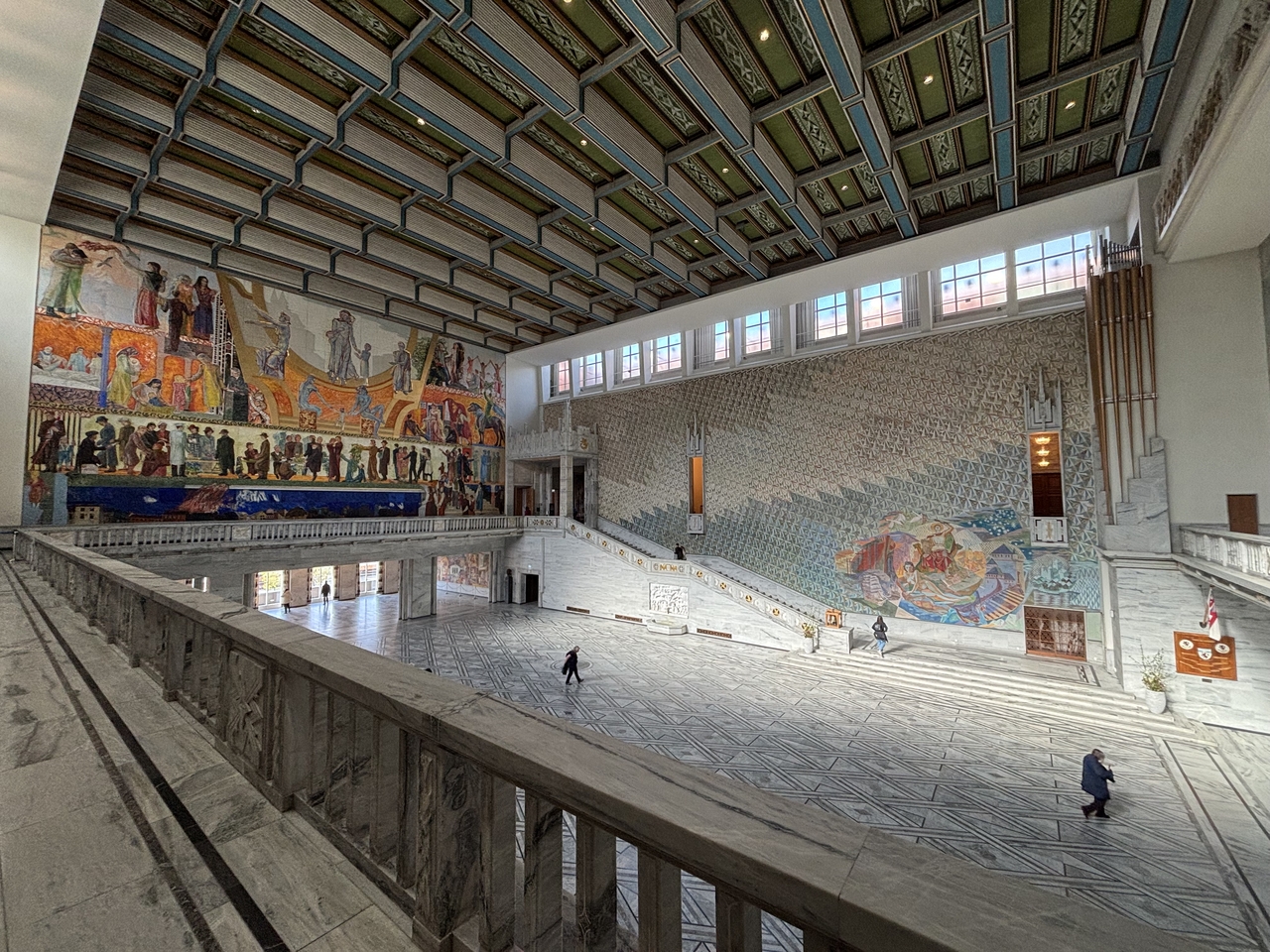
The artistic splendour of Oslo City Hall
The Opera House roof starts at ground level and is a free entry sloping plaza rising to give magnificent city views; the inside is pretty outrageous too. The weather is marvellous and several rustic spots along the harbour bring together swimming decks and water’s edge saunas – even powered saunas for sailing while sweating those pains away.
Walking through the city, from the free grounds of the Akershus fortress is a delight, the waterfront alive with little ferry boats ready to criss-cross the fjord Oslo sits on to splendid spots – even to the little Kon-Tiki Museum, home of the balsa wood raft on which adventurer Thor Heyerdahl crossed the Pacific in 1947.
A free gem is waterfront City Hall, opened in 1950, a modernist marvel with a vast hall filled with friezes and murals (where the annual Nobel Peace Prize ceremony is held) and a dizzying array of rooms, including the Munch Room, featuring his work, for marriages. Outside, the waterview gardens were bright with daffodils.
Ambience – The Ship
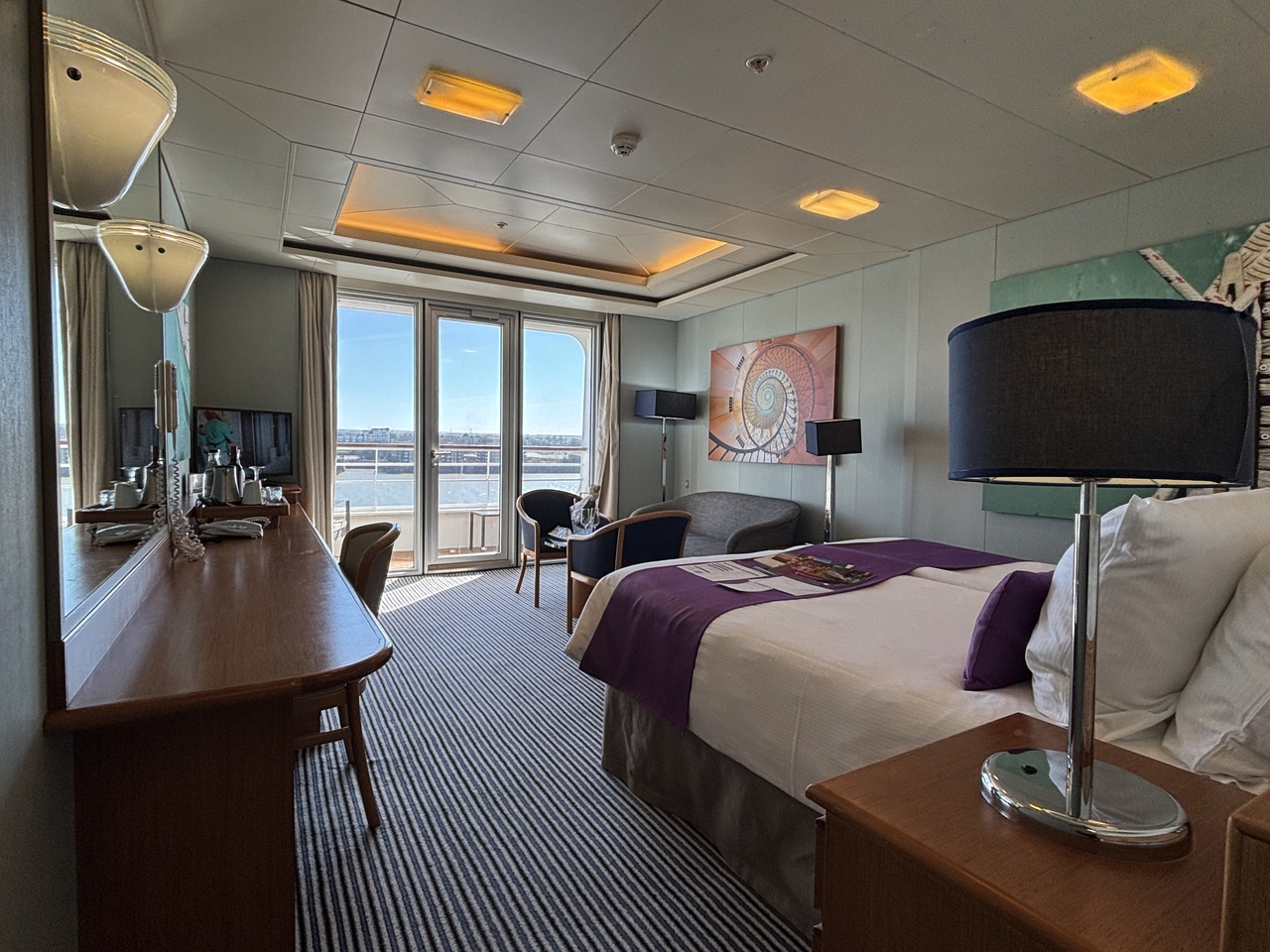
The perfect pleasures of an Ambience suite
Ambience is a classic cruise ship that’s been reborn with smart yet understated décor. Our suite was simple and square with a large bed and a balcony that even received good use during the springtime fjords adventure. Main restaurant is the Buckingham, big yet sophisticated, while the buffet (although all the food is served), Borough Market, runs down both sides of the ship. The poolside Pizza Grill provides not just pizza but also burgers, hot dogs and fries through most of the day. There are two extra-charge restaurants, Sea & Grass (seven courses. £29.95) and Saffron (an excellent curry house, £19.95).
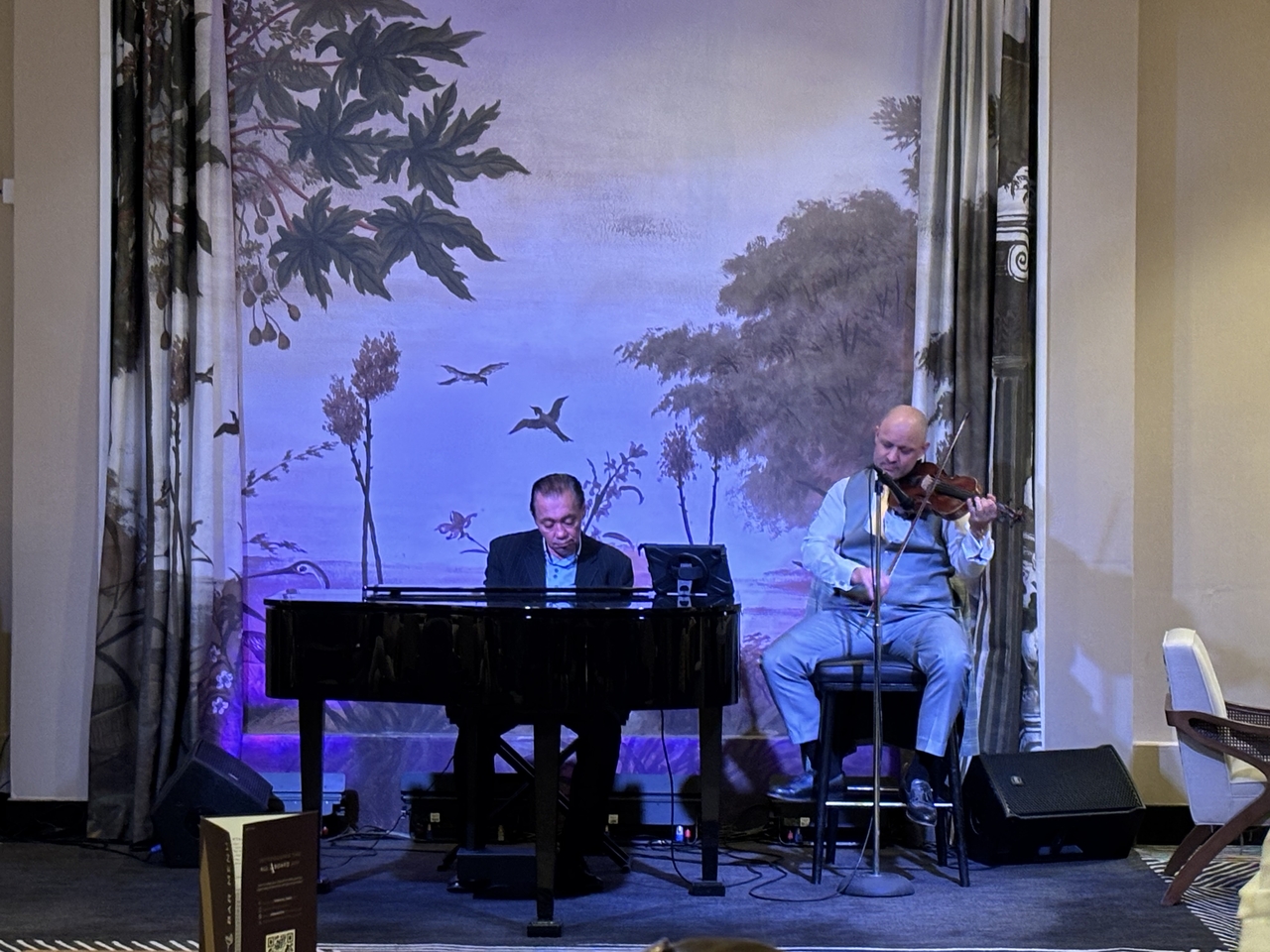
The Albert Duo in the exotic Botanical Lounge
Superb theatre comes from the small Theatre @ Sea troupe, with comedy murder mysteries, Mike Leigh’s modern comedy of manners, Abigail’s Party, and short vignettes around bars. Plenty of music as well, with pianist Alex Dennis playing pop favourites – including an Elton John show in the Palladium theatre – but truly timeless were the Albert Duo, a pianist and violinist from Budapest combining classical pieces and cabaret gems most evenings in the extravagant, flowery Botanical Lounge. Elsewhere the Party Tunes trio played soulful hits while Salt & Pepper had a clubby feel, while there were also discos, comedy quizzes and more.
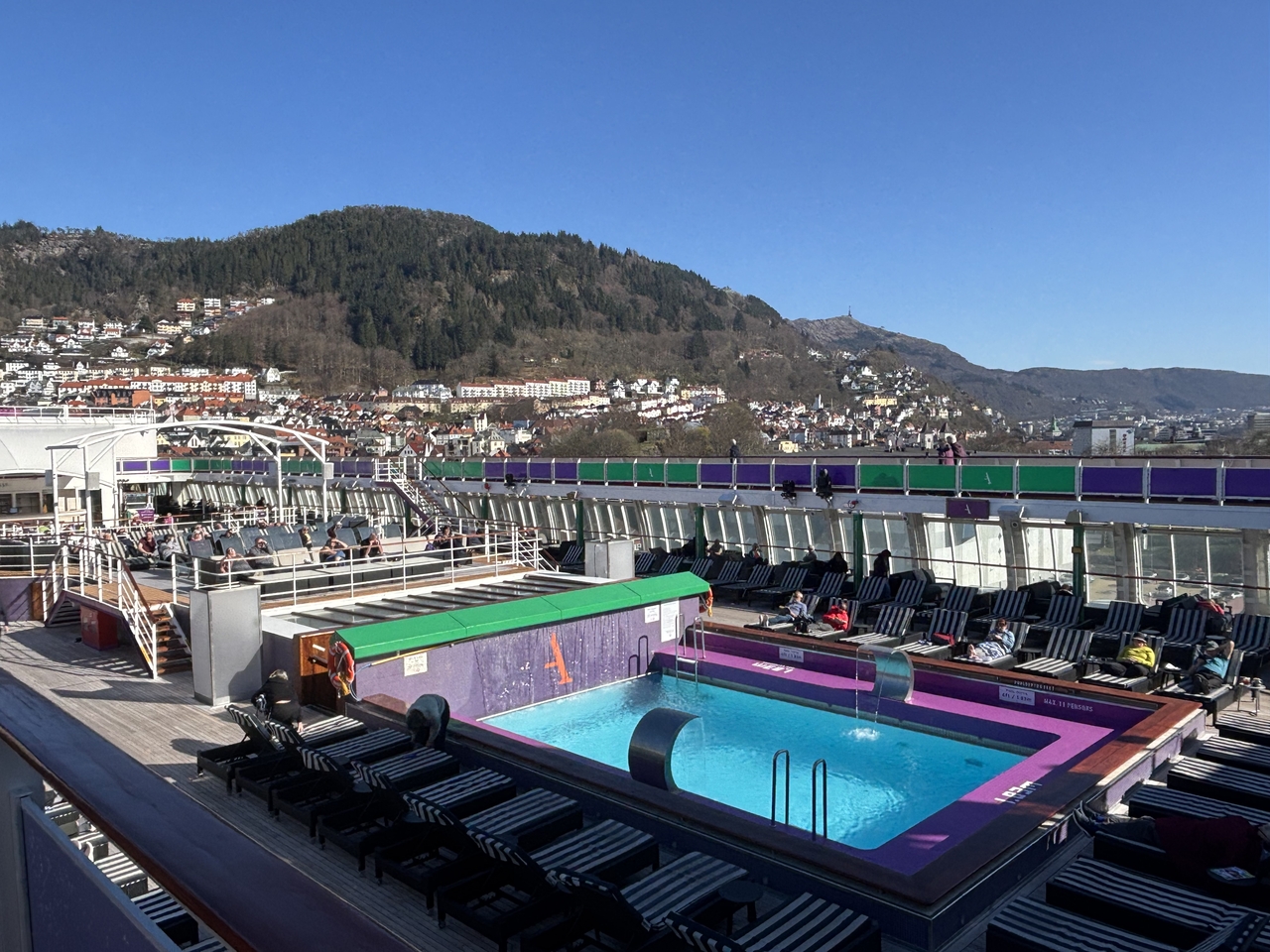
Ambience’s pool under Bergen’s clear blue sky
Neat spa with excellent massages, plus sauna, steam room and gym free to all guests. Outdoor pool and hot tubs.
Verdict
Springtime in Norway puts a spring in your step with weather that can be truly marvellous. Of course, the fjords are fun at other times too – but early sailings do offer exceptional value.
How much
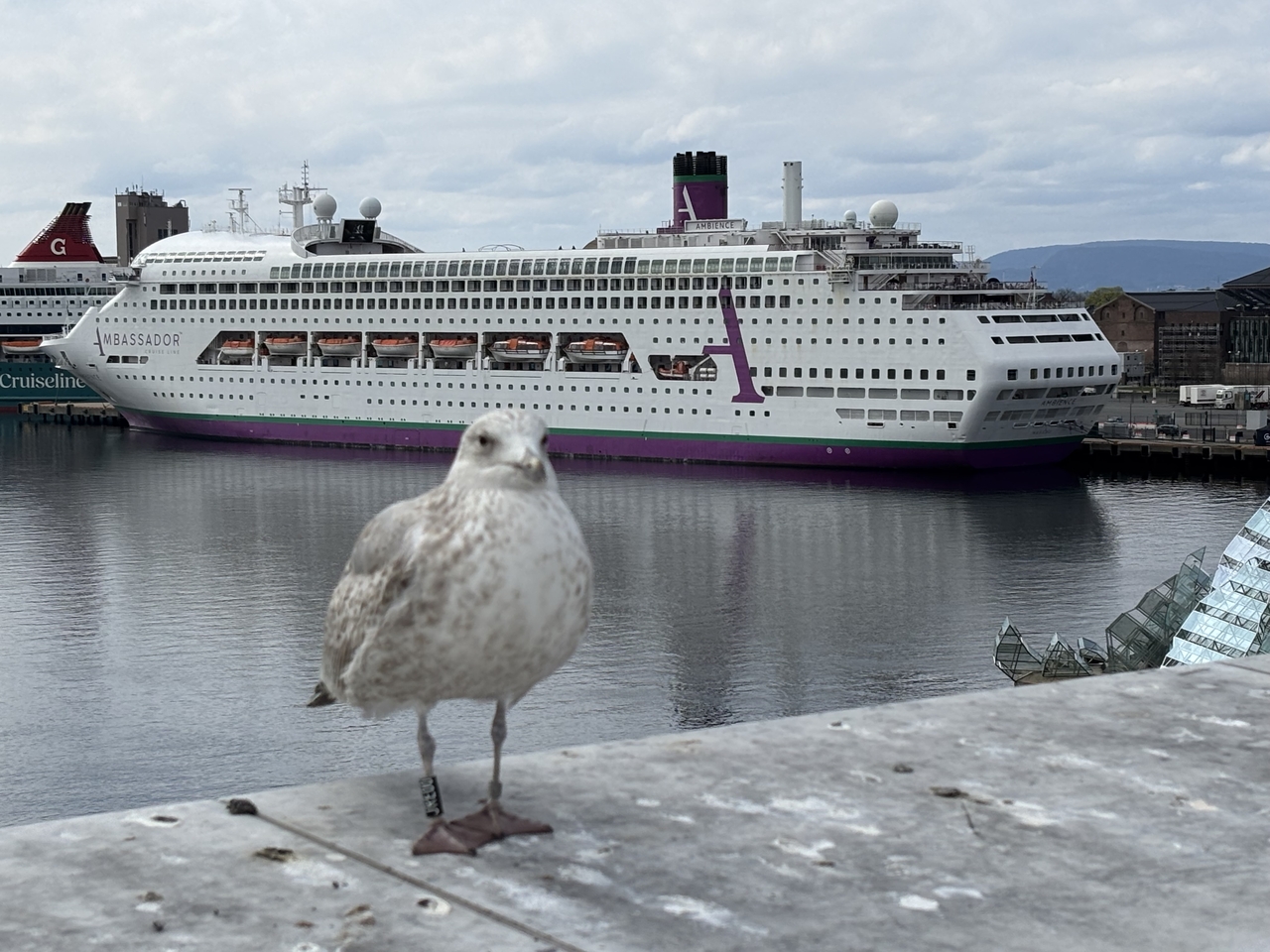
Ambience, plus friend on Oslo’s Opera House rooftop
Ambassador Cruise Line sails to the fjords from spring to autumn on its ships Ambience and Ambition. The seven-night Summertime Fjords cruise from London Cruise Terminal, departing July 21, 2025, on Ambience, starts at £1,009pp, two sharing an Oceanview cabin. Ambience’s seven-night Springtime Fjords sailing, April 3, 2026, starts at £629pp, two sharing an inside cabin. The ships also sail to the fjords from Bristol, Falmouth, Belfast, Liverpool, Newcastle and Dundee. Ambassadorcruiseline.com
The post Cruise Review: Springtime in the Fjords with Ambassador Cruise Line on board Ambience appeared first on The Travel Magazine.















